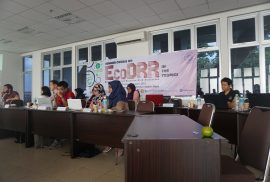By
Jose Limbay Lahi O. Espaldon
University of the Philippines Los Banos, Philippines
Universitas Gadjah Mada, Yogyakarta, Indonesia — Global climate change changes the weather conditions in specific regions in different ways, from increasing intensity of typhoon, melting of glacial ice caps, thinning of the cryosphere, increase in sea level, and some migration of different species into other ecosystems. With these, comes different disasters that may affect the land formations, natural ecosystems, human lifestyle and of course, the environment. As focused by Dr. Tsung Yi-Lin, there are detrimental effects of these changes for the coastal and shorelines, specifically in Indonesia. These have negative effects such as salt-water intrusion, coastal hazards, storm surges typhoon waves, etc. Using historical data, Dr. Yi-Lin created different frameworks for the identification of proper mitigation systems. These systems may vary depending on who one is referring to, from the perspective of a geologist, hydrologist, engineer, etc. Some practices may include the traditional hard structures to alleviate and. Mitigate certain disasters, however, may also cause further damage. Engineering adaptations have been made in order to address these specific problems, mainly “soft-engineering” in which it targets beach nourishment and sand dune rehabilitation. Maintenance however, is expensive and has a low life span.

